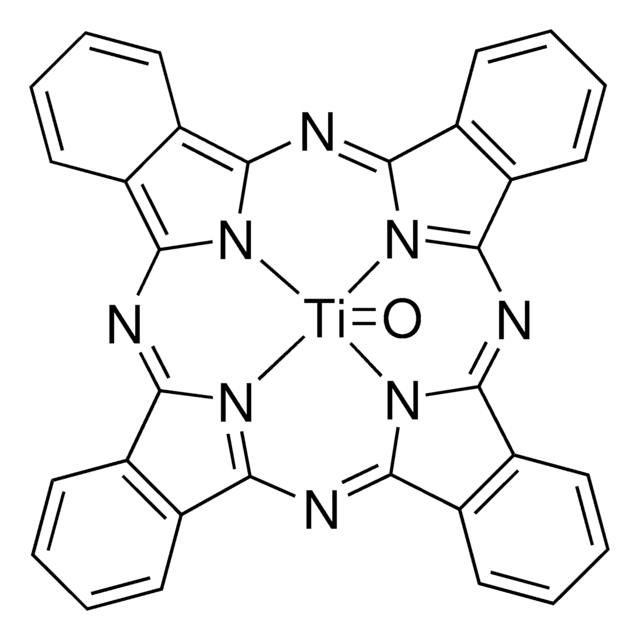791547
Titania paste, transparent
Sinônimo(s):
Greatcell Solar®, TiO2 paste
About This Item
Produtos recomendados
descrição
Crystal Structure: > 99% anatase (analysis carried out on starting material, prior to paste manufacture)
forma
paste (yellow)
concentração
19.0 wt. %
Tamanho médio da partícula
20 nm (active)
viscosidade
40000-55000 mPa.s(20 °C) (Analysis carried out at 20°C with 20mm 4 degree cone/plate; 40 s-1))
InChI
1S/2O.Ti
chave InChI
GWEVSGVZZGPLCZ-UHFFFAOYSA-N
Descrição geral
Aplicação
Transparent Titania Paste is formulated to yield sintered film thicknesses of 6-7μm when screen printed with a 43T mesh. Transparent Titania Paste has highly dispersed and stable anatase nanoparticles.
It is optimised for screen printing using a synthetic 43T mesh screen (or similar). After drying; this paste must be fired at or above 500°C. This results in a transparent sintered layer; with a film thickness of approximately 6-7μm for one printed layer and ~12μm for two printed layers; when using a 43T mesh screen.
The paste exhibits optimal rheological properties that provide good surface uniformity and contains organic binders specially formulated to provide versatile porosity suitable for a range of dye/electrolyte systems.
Storage: Store in the dark at 20°C
Informações legais
Palavra indicadora
Warning
Frases de perigo
Declarações de precaução
Classificações de perigo
Eye Irrit. 2 - Skin Irrit. 2
Código de classe de armazenamento
10 - Combustible liquids
Classe de risco de água (WGK)
WGK 1
Ponto de fulgor (°F)
195.8 °F - closed cup
Ponto de fulgor (°C)
91 °C - closed cup
Escolha uma das versões mais recentes:
Já possui este produto?
Encontre a documentação dos produtos que você adquiriu recentemente na biblioteca de documentos.
Os clientes também visualizaram
Artigos
Professor Shinar (Iowa State University, USA) summarizes the developments of a variety of sensor configurations based on organic and hybrid electronics, as low-cost, disposable, non-invasive, wearable bioelectronics for healthcare.
Few Monolayer Atomic Layer Deposition (ALD) on Surfaces and Interfaces for Energy Applications
Dye-sensitized solar cells (DSCs) are 3rd generation solar cells combining the promise of high efficiency with low production costs.
Organic photovoltaics (OPVs) represent a low-cost, lightweight, and scalable alternative to conventional solar cells. While significant progress has been made in the development of conventional bulk heterojunction cells, new approaches are required to achieve the performance and stability necessary to enable commercially successful OPVs.
Nossa equipe de cientistas tem experiência em todas as áreas de pesquisa, incluindo Life Sciences, ciência de materiais, síntese química, cromatografia, química analítica e muitas outras.
Entre em contato com a assistência técnica







